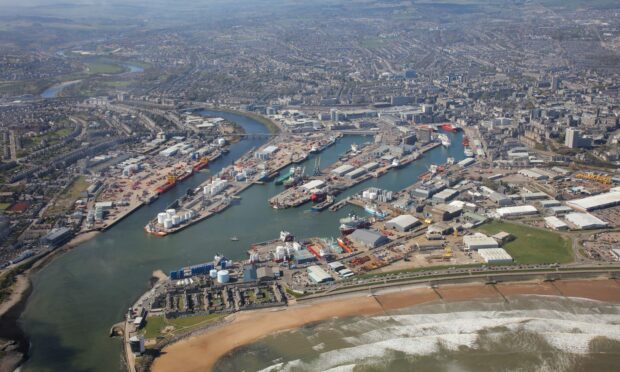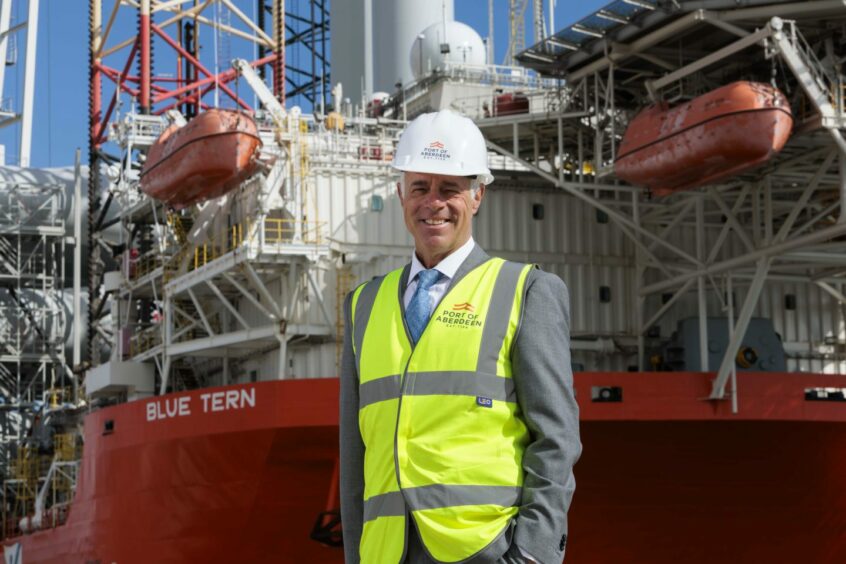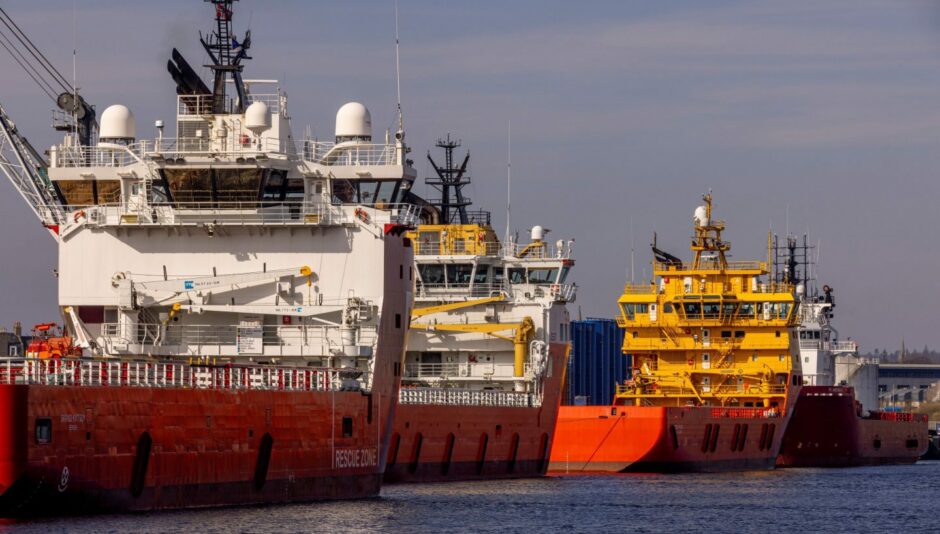Port of Aberdeen has been awarded funding from the UK Government for a multi-million-pound project to design and deliver the first large-scale shore power system in Scotland.
Bosses say the Shore Power in Operation (SPiO) scheme will pave the way for the roll-out of green power across the north harbour.
It is expected to cut vessel emissions at the berths by more than 80%, compared with burning marine fuel. It is also predicted to save more than 60,000 tonnes of CO2 equivalent, a measure which includes other harmful greenhouse gases besides carbon dioxide, over the next 20 years.
This could slash the port’s total emissions by 78%, equivalent to an annual reduction of 34,000 tonnes of CO2 equivalent.
Port of Aberdeen’s bosses striving to make the harbours fit for the future
The port is also working with private and public sector partners to make sure its two harbours can supply future low and zero carbon fuel alternatives for visiting vessels.
Port of Aberdeen chief executive Bob Sanguinetti said: “Partnership between the public and private sectors is essential to decarbonise the maritime industry. Aberdeen has firmly established itself as a port of choice for innovation and collaboration in this area.
“The Zevi (Zero Emissions Vessels and Infrastructure) funding further strengthens our position.”
He added: “We have a bold ambition to become the UK’s first net-zero port by 2040 and are investing £55 million over the next 10 years to turn this into reality.
“Shore power is critical to achieving our ambition and we look forward to working with our industry partners to deliver this ground-breaking emissions reduction project.”
We have a bold ambition to become the UK’s first net-zero port by 2040 and are investing £55 million over the next 10 years to turn this into reality.”
Bob Sanguinettie, Port of Aberdeen
Details of the SPiO scheme were unveiled during London International Shipping Week.
Port of Aberdeen is leading an industry and academia consortium in the Department for Transport (DfT)-backed project. Partners include the Connected Places Catapult, the UK’s innovation accelerator, as well as DOF Subsea, Tidewater Marine UK, OSM Offshore and Manchester University’s Tyndall Centre.
A total cost estimate for the scheme comes in at more than £4 million.
The value of Port of Aberdeen’s Zevi funding has yet to be confirmed but a grant worth in excess of £2.3m was proposed.
It follows a Clean Maritime Demonstration Competition-funded feasibility study completed in March 2022.
The new Zevi funding will see the design and installation of shore power facilities at seven berths on Albert Quay and Mearns Quay in Aberdeen’s north harbour. These are expected to be operational by April 2025 or sooner.
Shore power is considered the leading option to reduce vessel emissions at berth.
According to Port of Aberdeen, it’s a “well-tested technology” that prepares Aberdeen’s harbours for the future, helping them to accommodate hybrid or fully electric vessels.
Benefits include cleaner air, lower CO2 emissions, and reduced noise.
Port of Aberdeen is a partner in two other Zevi-funded projects. It is part of a Bibby Marine-led consortium working on a £30m scheme to build the world’s first zero-emission electric service operation vessel for the fast-growing offshore wind industry.
The near-900-year-old port is also supporting a £4.4m project, led by Southampton, London and Aberdeen-based Ocean Infinity, to convert a “high horsepower” vessel so it can use greener fuel.
DfT Zevi funding totalling more than £80m has been allocated to 10 flagship clean energy projects supported by 52 organisations across the UK. They will take place in multiple locations, from Orkney to the south-west of England.
Orkney Ferries is part of a £25.5m project, alongside Artemis Technologies and the European Marine Energy Centre, aimed at decarbonising inter-island transport through the commissioning of two 100% electric vessels, and charging infrastructure.



Conversation